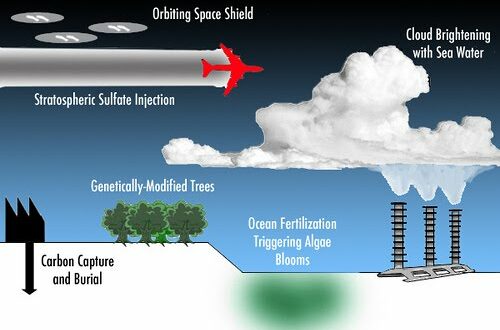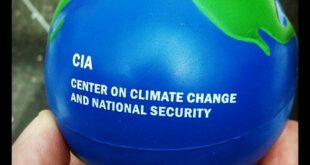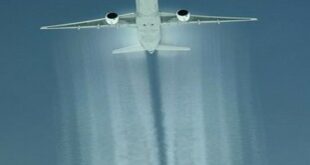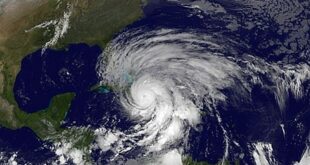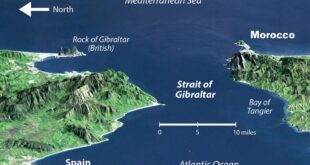Employing commercial aircraft to inject sulphur into the stratosphere is not a viable strategy, according to Finnish researchers. Even if planes flew at higher altitudes and emitted ten times the current legal limit of sulphur, the cooling effect would be lower than if the same amount of sulphur was injected over the tropics.
“Using commercial aircraft for sulphur injection would demand unrealistic scenarios to cause significant radiative forcing and thus cooling,” Anton Laakso of the Finnish Meteorological Institute told environmentalresearchweb. “It would require enhancement of fuel sulphur concentration clearly over our current legal limits and lifting the flight paths of practically all intercontinental flights to the stratosphere – which the current type of aircraft can do only in the polar regions.”
Even if all this were possible, Laakso said that, because current air traffic is concentrated in northern mid-latitudes, the strategy would lead to unbalanced forcing between the northern and southern hemispheres, seasonality in global forcing, and weaker geoengineering effectiveness than if sulphur were injected into the tropics. Sulphate particles in the atmosphere above northern mid-latitudes would have a smaller effect on weak winter sunshine, and would also be removed more quickly in the winter.
Injecting sulphur into the stratosphere is, said the researchers, the most studied and probably the most promising method of solar radiation management. The sulphur reacts in the atmosphere to form sulphate aerosols that reflect incoming radiation back to space. Because the stratosphere is relatively stable, sulphate aerosols can remain there for up to a couple of years; in the troposphere they would last just days.
Numerous injection methods have been considered, including military jets, modified artillery, chimneys and high-altitude balloons. This is the first detailed study of injection from commercial aircraft.
Laakso and colleagues from the Finnish Meteorological Institute and University of Eastern Finland found that lifting all commercial intercontinental flights into the stratosphere would cause a global surface shortwave radiative forcing of –0.05 W per square metre. Enhancing current fuel-sulphur concentrations by a factor of five would lead to –0.1 W per square metre, and increasing them 50-fold would create –0.85 W per square metre. For comparison, a doubling of carbon dioxide produces a radiative forcing of 3.7 W per square metre.
Introducing an equivalent amount of sulphur to the 50-fold fuel boost – 3 Tg per year – into the stratosphere above the tropics would create a forcing of –1.32 W per square metre. Sulphate particles would remain above the tropics for longer and have a greater effect on the strong sunlight in this region, according to the researchers.
The team used the ECHAM5.5-HAM2 climate-aerosol model, along with IPCC data on aircraft emissions for the years 2000 and 2050. “This [is] one of the few stratospheric geoengineering studies including an explicit treatment of sulphate aerosol microphysics,” they wrote in Environmental Research Letters(ERL).
“Solar radiation management with stratospheric sulphur has often been suggested as a potential method to cool the climate,” said Laakso. “While there have been some studies on the effectiveness, climate effects and risks of this kind of geoengineering, only a few have considered specific injection methods/scenarios. Using commercial aircraft for sulphur injection is an old idea (Budyko 1977) and has resurfaced every now and then since, but had not been studied until now.”
The technique would require the use of Concorde-type aircraft that can reach the stratosphere, potentially increasing fuel consumption. What is more, such supersonic aircraft are currently only permitted over the oceans. And the planes would emit large amounts of NOx, which is harmful to the ozone layer.
Although further investigation is needed, Laakso does feel that “using geographically uneven stratospheric injections might give at least some leverage to optimize geoengineering based on regional needs, i.e. directing stronger radiative cooling to areas that are projected to warm more as climate change continues, and vice versa”. The flight paths simulated for 2050 would have a much larger effect on radiative forcing in Europe, North America and Northern Asia than Africa, South America, Australia, India and Southeast Asia.
“We will continue investigating the role of aerosol microphysics and chemical properties in stratospheric geoengineering,” he said. “One idea is to try and find the most optimal stratospheric sulphur geoengineering strategy in terms of regional climate effects. This will require studying regional changes in temperature and precipitation too and not just radiative forcings, as we have in this work.”
The team reported the study in Environmental Research Letters (ERL).
environmentalresearchweb
 Conspiracy Plot
Conspiracy Plot
